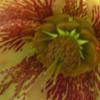
Very occasionally I receive a book to review and the timing of its arrival seems to be very serendipitous. This is true of The Art of Gardening, a Timberpress publication which focuses on the approach to gardening at Chanticleer, a garden in Pennsylvania, USA.
The book is written by the staff of the garden, with the bulk written by Bill Thomas, head gardener but supported by substantial contributions from the rest of the team. The text is supported by sumptuous photographs mainly by Rob Cardillo, but also with some taken by the gardeners. This is not your standard coffee table book to flick through enjoying pretty pictures. This is a serious and practical gardening book but presented in the form of discussions and conversations with the reader. There are no ‘how to’ sections and only one list of suggested plants (annuals for the cut flower garden) but throughout the text, sprinkled amongst the paragraphs are all sorts of bits of advice and encouragement just as if you are standing in the garden chatting to one of the gardeners or at a very good garden talk.
The other striking thing about the book is the garden itself. Chanticleer is a historic garden, originally created by the Rosengarten family in the 1920s. The typical large family estate, funded by commerce, of the USA at the start of the twentieth century. Its creation was continued by a number of generations before a Foundation was created in the 1970s to maintain the house and gardens. The foresight of the last Rosengarten in setting the mission as “Operate the property as a beautiful public garden…..and educate amateur and professional gardeners” has allowed the garden to develop and grow and not become stultified as so many historic gardens in the UK become, stuck in a time warp and slowly declining. Not only do the gardeners have the opportunity to develop the garden but each specific garden area is owned by one of the gardening team who manages it and develops it and takes ownership. This then gives the garden a personal feel, or as I have so often said about gardens, a soul. Maybe a lesson to be learnt by our National Trust and other such organisations.
The book itself is a joy to read with the voices of each of the contributors shining through. There is a little history of the garden, then a section on design which explains how the various components are set out, managed and how the garden team work together to connect their various elements. There is a lovely section on art showcasing the various garden ornamentation from obelisks to exquisite sculpture that the garden team have created over the years with each learning various crafts supported by the foundation. Then the majority of the book looks at plants and how they are used in the garden.
I have to admit to skimming the section on trees as I will never be in a position to plant the sorts of trees referred to but I enjoyed the highlights on the birds that inhabit the garden. We then move on through bulbs, perennials, plants for all types of shade, plants for sun, vines, climbers, edibles. There is discussion on color showing the various approaches in different years taken by gardens – sometimes vibrant, sometimes soft and calming. As I have said throughout the text there are little nuggets of information, asides, which make you stop and think ‘oh yes I see that now’ or ‘what a good idea I must try that’.
There is a section on assessing plants which particularly interested me. I have attended many a talk by people like Fergus Garrett where they have said this but I have never really quite got what they meant. Emma Seniuk gives a lovely example of how Aquilega chrysantha ‘Denver Gold’ forms rosettes of frilly foliage when it emerges hiding the soil, whereas Aqulegia ‘McKana’s Gold’s foliage is fanned out and you look through it at the soil – how true and I shall be taking that into account in the future. Another idea I might try is sowing something like wheat or rye around my bulbs to hide the soil and stop muddy splash back. Of course our climates are different so it might be that the crops wont grow at the right time for this to work for me in the UK but its worth investigating. I could go on, and on.
I said the book’s arrival was serendipitous for me. I have been feeling lost with my garden, I have drifted from my original careless enjoyment of all things horticultural into a place where I over think everything to the point I have had periods of complete despondency. A few weeks ago I realised what was happening and why and took the mental step to go back to my gardening roots, so to speak, and try to rediscover my love of all things planty. The Art of Gardening conveys that sense of joy that I have lost. The closing paragraph sums it up well “In your own garden, trust your instincts. Design to please yourself and make the garden your personal expression.”
I can see me coming back to this book time and time again and I suspect it will quickly become my second favorite gardening book. My first is ‘The Layered Garden’ by David Culp – interestingly also based in Pennsylvania. There is something about both books that is exuberant and pushes at the boundaries in a gentle way but is at the same time liberating – its something I have yet to find in English garden writing, apart from maybe Christopher Lloyd. Maybe I should visit Pennsylvania….now there’s a thought!

